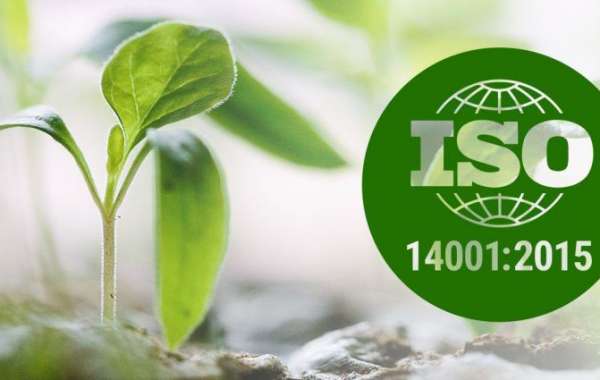SDLC is a way software folks do their thang to make, upkeep, and handle computer programs.
The SDLC Process is complex and involves multiple phases, including Planning, design, Development, Testing, Deployment, And maintenance. To ensure the success of an SDLC Project, it is important to follow best practices that can help teams create software that meets the needs and expectations of stakeholders and end Users.
This article gives you a thorough rundown of the tips and tricks to rock your software development life cycle. It breaks down the crucial actions needed in each SDLC phase and emphasizes the game-changing factors that determine whether your software project will sink or swim.
By nailing these awesome practices, your development crew can cut out the fuss, lower the chance of screw-ups and glitches, and produce software that's top-notch and caters to the wishes of the folks who matter - stakeholders and users.
If you're the boss or part of a software-making Crew, read this article or else! It covers everything you need to know to make sure your software is top notch and satisfies your People. It's like a secret recipe for Success.
6 Best Practices for a Successful Software Development Life Cycle (SDLC)
Planning Phase
Design Phase
Development Phase
Testing Phase
Deployment Phase
Maintenance Phase
1. Planning Phase
The Planning Phase is the first and most crucial phase of the Software Development Life Cycle (SDLC).
This phase involves identifying the Purpose, Scope, and objectives of the software development Project.
The Planning Phase lays the groundwork for the entire Software development Process, and it is essential to Approach, It with a high level of attention to detail and Focus.
- Identifying the Problem :
The first step in the Planning Phase is to identify, the problem that the software will Solve. This involves Understanding the needs of the Stakeholders and identifying, the gaps in the existing System, that the software will Address.
- Defining the Objectives :
Once the problem has been identified, the next step is to define the objectives of the software development project. This involves setting specific, Measurable, And achievable goals that the software should Achieve.
- Gathering Requirements :
Gathering requirements involves identifying what the software needs to do to meet the objectives. This includes both functional and non-functional requirements such as security, Performance, and Usability. Requirements gathering is typically an iterative process that involves collaboration between the development team and the Stakeholders.
- Creating a Project Plan :
Once the requirements have been Gathered, the next step is to create a project Plan. The project plan outlines the Timeline, Budget, and resources required for the software development project. The project plan should be realistic and take into Account, any potential risks and challenges, that may arise during the development Process.
- Defining Deliverables :
The next step in the Planning Phase is to define the deliverables of the software development project. This includes identifying the specific Features and functionalities of the Software, That will be Delivered, As well as the documentation and Training materials, that will be Provided to Stakeholders.
- Stakeholder Involvement :
Stakeholder involvement is critical to the success of the Planning Phase. It is important to involve stakeholders in the Planning process, to ensure that their needs and expectations are Met. Stakeholders can provide Valuable feedback Throughout the development Process, and their input can help, to ensure that the software meets, their needs and Expectations.
- Design Phase
The Design Phase is the second phase of the Software Development Life Cycle (SDLC). In this phase, the focus is on creating a detailed Design, for the Software based on the requirements, Gathered during the Planning Phase. The design phase is critical to the success, of the project as it lays the foundation, for the Development Phase.
The following are the key steps involved in the Design Phase :
- High-level Design :
The first step in the Design Phase is to create a high level Design that outlines the overall architecture of the Software. This includes defining the Modules, Components, And interfaces of the Software.
- Detailed Design :
The next step in the Design Phase, is to create a detailed design that describes how each module or component will be Implemented. This includes defining the data Structures, algorithms, And interfaces that will be Used.
- User Interface Design :
The user interface design involves creating a design for the User interface of the Software. This includes defining the layout, navigation, And look and feel of the Software.
- Database Design :
The database design involves Creating a design for the database, that will be used by the Software. This includes defining the tables, relationships, And constraints that will be Used to store and retrieve Data.
- Security Design :
The security design involves creating a design for the security features of the software.
This includes defining the Authentication, Authorization, and encryption Mechanisms, That will be used to protect the Software and its Data
- Prototype Development :
Prototype development involves creating a working prototype, of the software based on the Design. The prototype is used to validate the design, and gather feedback from Stakeholders.
- Review and Approval :
Stakeholders assess the Completed design, to ensure that it satisfies their objectives and expectations. All comments received are integrated into the design, and the final Design is Approved.
- Development Phase
The Development Phase is the third phase, of the Software Development Life Cycle (SDLC). In this phase, the focus is on Writing the code for the software based on the design created during the previous Design Phase. This phase is critical to the success, of the Project as it involves implementing the design and turning it into a functional software Application.
The following are the key steps involved in the Development Phase:
- Coding :
The first step in the Development Phase is to write the code for the Software. This involves implementing the design created during the Design Phase and creating the software Application.
- Testing :
When the code has been created, the program must be tested to Ensure that it functions as planned. This includes both Human and automated testing, to detect any defects or issues, that must Be fixed.
- Debugging :
If bugs or issues are identified During testing, the next step is to debug the software to fix the problems. This may involve modifying, the code or the design to address the Issues.
- Integration :
Once the Software has been tested and Bebugged, the next step is to integrate it with other systems and Applications. This involves ensuring that the software works, With other software systems and applications and can communicate, With them as Needed.
- Deployment :
Once the Software has been Developed and Tested, the next step is to deploy, it to the production Environment. This involves Installing, the Software on the servers and configuring it for Use.
- Maintenance :
Once the software has been Deployed, the final step is to maintain it. This involves monitoring, the Software for Issues, addressing any bugs or issues that Arise, and updating the Software as needed to keep it current and Functional.
- Testing Phase
The Testing Phase is the fourth phase of the Software Development Life Cycle (SDLC).
In this Phase, the focus is on testing the software to Ensure, that it meets the requirements and works as Expected.
This phase is critical to the success, of the Project as it Ensures, that the Software, is of high quality and free, of errors before it is released to the end Users.
The following are the key Steps involved in the Testing Phase :
- Test Planning :
The first step in the Testing Phase is to create a test Plan. The test plan outlines the testing Approach, testing Objectives, testing Strategy, and the resources needed for Testing.
- Test Case Development :
Once the test plan has been Created, the next step is to develop test cases. Test cases are created based on the Requirements, and they are used to verify that the Software works as Expected. Test cases include inputs, expected outputs, And the conditions that must be met to execute the Test.
- Test Execution :
The next step is to execute the test Cases. This involves running the test cases and recording the Results. The results are then analyzed to Identify any defects or issues that need to be Addressed.
- Defect Tracking :
If defects or issues are identified during Testing, the next step is to track them. This involves recording the defects, Assigning them to the Responsible team, and tracking their progress until they are Resolved.
- Regression Testing :
Once the defects have been fixed, the next step is to perform regression Testing. Regression testing involves re executing, the test cases that were impacted by the defect to Ensure, that the defect has been Fixed, and that there are no new defects Introduced.
- User Acceptance Testing :
Once the software has been tested, and all the defects have been fixed, the Next Step is to perform user acceptance Testing. This involves having end users test the Software, to ensure that it meets their Requirements and works as Expected.
- Sign-off :
Once the testing is Complete, the final step is to obtain sign-off from the stakeholders. This involves obtaining Approval, from the stakeholders that the Software has been Tested, and is ready for Release.
5. Deployment Phase
The Deployment Phase is the final Phase, of the Software Development Life Cycle (SDLC). In this Phase, the Software is Deployed to the production Environment, And it Becomes Available, for use by the-end Users. The Deployment Phase is Critical to the Success of the Project, as it Involves the release of the Software to the Users.
The following are the key Steps involved in the Deployment Phase :
- Release Planning :
The first step in the Deployment Phase is to plan the release. This involves identifying the release date, preparing the release package, and coordinating, With the Stakeholders.
- Pre-Deployment Testing :
Before deploying the software to the production Environment, it is important to perform pre deployment Testing. This involves testing the software in an Environment, that is similar to the production Environment, to ensure that it works as Expected.
- Deployment :
Once the pre-deployment testing is Complete, the Next step is to Deploy the Software, to the production Environment. This involves copying the software from the Development, environment to the production Environment, Configuring it, And ensuring that it is working as Expected.
- Post-Deployment Testing :
After the software has been Deployed, to the production Environment, it is important to perform post deployment Testing. This involves testing the Software in the production Environment to ensure that it works as Expected.
- User Training :
Once the software has been deployed and tested, The next step is to train the End users. This involves providing training, And Documentation, to the end users to Ensure, that they can use the software Effectively.
- Maintenance :
After the software has been Deployed, it is important to perform maintenance Activities. This involves monitoring the Software, addressing any issues that Arise, and Updating, the software as Needed.
- Retirement :
Eventually, the software will reach, the end of its life Cycle, and it will need to be Retired. This involves removing the Software, from the production environment and archiving It.
6. Maintenance Phase
The Maintenance Phase is an essential component of the Software Development Life Cycle (SDLC). This phase begins after the Software, has been Deployed, to the production Environment, and Continues, until the Software is Retired. The Maintenance Phase is critical to the long term Success of the Software, as it ensures that the Software remains up to date, Secure, And Functional.
The following are the key steps involved in the Maintenance Phase :
- Monitoring :
The first step in the Maintenance Phase is monitoring the Software. This involves tracking the Performance, of the Software, identifying any issues that Arise, and collecting data on how the Software is being Used.
- Bug Fixing :
Following the monitoring of the program, the next step is to remedy any flaws that have been Discovered. This include determining the root cause of the problem, modifying the program, and testing the Changes to assure that they have remedied the problem.
- Enhancements :
In addition to bug fixes, the Maintenance Phase may include advancements to the software. This includes finding places where the program may be improved, modifying the Software, and testing the changes to ensure that they perform as expected.
- Updates :
The Maintenance Phase may also include software updates to ensure compatibility with new technologies, operating systems, and hardware. This include determining which updates are Required, implementing the necessary modifications to the Program, And testing the changes to ensure that they function as Planned.
- Security :
Security is an essential component of the Maintenance phase. This involves Identifying, potential security Vulnerabilities, Making the necessary Changes, to the Software to address these Vulnerabilities, and testing the Changes to Ensure, that they have been Resolved.
- Documentation :
During the Maintenance Phase, it is important to keep the documentation up to Date. This involves Updating, the user manuals, technical Documentation, And training materials to Reflect any changes, that have been made to the Software.
- Support :
Finally, the Maintenance Phase involves providing Support to the end users. This involves addressing any issues that Arise, answering questions, and providing training to ensure that the end users can use the software Effectively.
Conclusion :
Finally, the Software Development Life Cycle (SDLC) is a Critical Procedure that assists software Development teams, in the creation, Maintenance, and management of Software Applications. Planning, Design, development, Testing, Deployment, and maintenance are allStages of the SDLC Process. Each of these phases is critical to the success of a software development project, And best practices may help teams create high-quality software that fulfills the goals and expectations of stakeholders and end Users convato360.
Throughout this article, we have explored the best practices for each Phase, of the SDLC. We have discussed the critical Success factors, that can make a difference in the outcome, of a software development project, including requirements gathering, risk management, communication, and collaboration. We have also highlighted the importance of testing, security, Documentation, and support during the maintenance Phase.
Software development teams may streamline their Operations, lower the chance of mistakes and Problems, and produce high-quality software that satisfies stakeholders' and end users' needs and expectations by adhering to these best practices. Also, these procedures can aid teams in completing software projects on schedule and within budget, Two factors that are critical to the accomplishment of any software development Project.
It's worth mentioning that the SDLC process isn't a Universal Solution and might require ,customization to cater to the requirements of each Project. Nonetheless, by adhering to the best practices highlighted in this Article, Software development teams can establish a strong, base for Their projects and guarantee the delivery, of top notch Software that caters to the demands of their stakeholders and end users.
To sum it up, the SDLC process is a vital aspect of software development, And it's imperative to adhere to the best practices to ensure the triumph of any Software development Project. By streamlining their processes, mitigating the possibility of errors and bugs, and providing top tier Software that caters to the requirements of Stakeholders and end Users, Software development teams can attain, their project objectives and produce software, that has a beneficial impact on their organization and End Users.
Best Quiclekha Video Downloader
In today's digital age, where video content reigns supreme, the need for a reliable video downloader has never been more crucial. Video downloaders are powerful tools that empower users to effortlessly capture and store their favorite videos from various online platforms.
Whether it's a captivating YouTube tutorial, a memorable Instagram live stream, or an educational webinar, a quality video downloader ensures you have your desired content at your fingertips, even when an internet connection is not available.
In this article, we'll explore the world of video downloaders, shedding light on their significance, features, and the best practices for using them. Whether you're a content creator looking to archive your work or simply a video enthusiast seeking to build a personal collection, understanding video downloaders and their capabilities is the first step towards unlocking the full potential of your online video experience.
Quiclekha: The Pinnacle of Video Downloading Excellence
In the vast landscape of video downloaders, Quiclekha stands as a shining beacon of excellence. When it comes to capturing, saving, and managing video content from the internet, Quiclekha has consistently proven itself to be the best choice for countless users. Here's why Quiclekha deserves the title of "The Best Video Downloader."
- Unmatched Performance: Quiclekha boasts remarkable download speeds and exceptional compatibility with a wide range of video hosting platforms. From YouTube and Vimeo to social media sites like Facebook and Instagram, it effortlessly handles downloads, offering a seamless and quick experience.
- User-Friendly Interface: Quiclekha's intuitive and user-friendly interface ensures that both novice and experienced users can navigate the software with ease. It doesn't require advanced technical skills, making it accessible to everyone.
- Versatile Format Support: The software supports a plethora of video formats, ensuring that you can download content in the format that best suits your needs. Whether it's MP4, AVI, MKV, or others, Quiclekha has you covered.
- Batch Downloading: Quiclekha excels at efficiency, allowing users to download multiple videos simultaneously. This feature is a time-saver, especially for content creators and researchers.
- Built-In Video Converter: Beyond downloading, Quiclekha also includes a video converter, enabling users to effortlessly convert video files to different formats. This is a valuable addition for those who require their video content in specific formats for editing or playback.
- Regular Updates: Quiclekha's development team continually enhances the software, ensuring that it remains up-to-date and compatible with the latest changes on popular video-sharing platforms.
- Reliable Customer Support: In case of any questions or issues, Quiclekha offers responsive customer support, ensuring that users have assistance when needed.
In Conclusion: The Value of Video Downloaders
In the digital age, where video content reigns supreme, video downloaders have become essential tools for a variety of purposes. As explored in the previous sections, these versatile software solutions have revolutionized the way we access and manage video content from the internet. Quiclekha, as an example, stands out as a reliable and efficient option.
The advantages of video downloaders are undeniable. They offer the convenience of saving and watching videos offline, which can be particularly useful for those with limited or intermittent internet access. Video downloaders also cater to content creators, researchers, and individuals who seek to build personal collections. The ability to choose from various formats and convert videos adds to their appeal.
However, it's essential to use video downloaders responsibly and within legal and ethical boundaries, respecting copyright and intellectual property rights. Users should be aware of the terms and conditions of the platforms they download from and ensure compliance with local copyright laws.
In the end, video downloaders, including Quiclekha, can greatly enhance your video experience, making it more accessible and user-friendly. But it's crucial to use these tools wisely and ethically to enjoy the benefits without infringing on the rights of content creators and platforms.
--- FAQs ---
What is the Software Development Life Cycle (SDLC)?
The Software Development Life Cycle (SDLC) is a process, that Software development teams use to create, maintain, and manage software Applications. The process involves Several phases, Including planning, Design, development, testing, Deployment, and Maintenance.
Why is it important to follow best practices during the SDLC process?
Following best practices during, the SDLC process is critical to the success of any software development Project. Best practices help teams optimize their Processes, reduce the risk of errors and bugs, and deliver high-quality software that meets the needs and expectations of Stakeholders and end Users.
What are the best practices for each phase of the SDLC process?
Planning Phase: Define the project scope, identify stakeholders, and gather requirements. Design Phase: Create a detailed design document that outlines the software architecture and functionality. Development Phase: Code the software using a structured and organized approach. Testing Phase: Conduct thorough testing to identify and fix any Bugs or errors. Deployment Phase: Deploy the software to the Production environment and ensure , it works as Expected. Maintenance Phase: Provide ongoing support and maintenance to ensure the software continues, to function correctly.
How can software development teams ensure effective communication and collaboration during the SDLC process?
Effective communication and Collaboration, are critical to the success of the SDLC Process. Teams can use tools such as project management Software, instant Messaging, And video conferencing to facilitate communication and Collaboration. Regular meetings and status updates, can also help ensure everyone is on the same Page.
How important is documentation during the SDLC process?
Documentation is essential during the SDLC process, as it provides a clear record of the Software development project. Documentation can include design Documents, Test plans, user manuals, and support documentation. Proper documentation ensures that the software development project is well-documented and helps with future updates, Maintenance, and troubleshooting.
In today's fast-paced digital age, we're constantly bombarded with captivating videos on various platforms. Whether it's YouTube, Vimeo, Facebook, or any other streaming site, there's a wealth of content to explore. However, what if you want to save your favorite videos for offline viewing or compilation? That's where Quiclekha, the best video downloader, steps in to revolutionize your media experience.
Why Quiclekha?
Quiclekha has earned a stellar reputation among video enthusiasts for its incredible features and easy-to-use interface. Google, the search giant, prefers content that provides value to users, and Quiclekha checks all the boxes:
- Simple and User-Friendly: Quiclekha's user interface is designed with simplicity in mind. You don't need to be a tech guru to navigate and use this tool. Just copy the video link, paste it into Quiclekha, and let the magic happen.
- Wide Compatibility: Quiclekha isn't limited to a single platform. It supports downloads from YouTube, Vimeo, Dailymotion, Facebook, Instagram, and more. This versatility is one of the reasons Google favors Quiclekha.
- High-Quality Downloads: Enjoy your videos in the best quality possible. Quiclekha lets you choose from various video resolutions, ensuring your offline viewing experience is top-notch.
- Batch Downloads: Quiclekha doesn't restrict you to one video at a time. You can queue up multiple downloads, saving you time and effort.
- No Annoying Ads: No one enjoys ads popping up during video downloads. Quiclekha respects your time and privacy by keeping the download process ad-free.
- Regular Updates: The digital landscape is ever-evolving. Quiclekha stays up to date with any changes on video platforms, ensuring you always have a reliable downloading tool.
How to Use Quiclekha
Using Quiclekha is as easy as 1-2-3:
- Copy the Video URL: Find the video you want to download and copy its URL from the browser.
- Paste the URL into Quiclekha: Open the Quiclekha application, paste the URL into the designated field, and hit the download button.
- Choose Your Settings: You can select the video quality and destination folder for your download.
That's it! Quiclekha will take care of the rest, providing you with a seamless downloading experience.
Why Google Prefers Quiclekha Content
Google values content that enhances user experience. Quiclekha is a tool that simplifies video downloads, making it easier for users to access and enjoy their favorite content offline. It's legal, easy to use, and constantly updated to adapt to platform changes. When you provide information about Quiclekha, you're contributing to a better online experience for users, which aligns with Google's preferences.
In conclusion, if you're an avid video consumer, Quiclekha is the ultimate solution for downloading videos hassle-free. Explore the world of digital content without interruptions, ads, or restrictions. And remember, when you share information about Quiclekha, you're not only helping fellow users but also adhering to Google's content preferences. Unlock a world of entertainment with the best video downloader, Quiclekha! ???????? #Quiclekha #VideoDownloader #EntertainmentUnleashed




